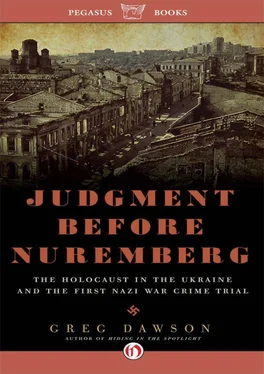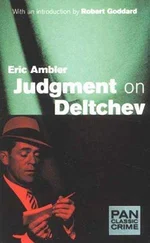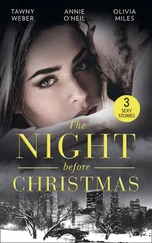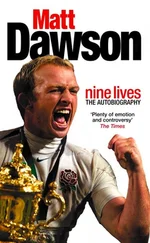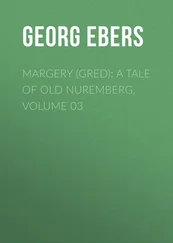“If life is just food and pleasure, maybe not,” Victor laughed. “Vodka and sausage were cheap in those days. But if life is reading good books popular in the world, not just what somebody in the Kremlin wants me to read, then I say we are on the right way. The difficult way.”
The “difficult way” includes facing historical truths about the Holocaust that were distorted and suppressed by Soviet authorities, with the connivance of anti-Semitic elements in Ukraine. Victor’s tutorial was illuminating about the primacy and the persistence of the past. When the Nazis learned that archaeologists had found bones of Goths—Germanic people—from 300 to 500 A.D. in Ukraine, he said, Hitler ordered a special exhibit to prove to his troops that this land—this fresh Lebensraum —had always belonged to Germany. They were merely taking back what was theirs. They failed, leaving the Russians and Ukrainians to resume their curious co-dependent dance.
“The last two centuries, the territory of northeastern Ukraine, especially the Kharkov region, was under strong Russian domination in politics, economics and culture,” Victor said. “The population of this region consisted of 60% Ukrainians and 40% Russians, but these Ukrainians were and are completely Russified. You see that the Russian language is still common in Kharkov. During World War II some Ukrainian and Russian political groups and leaders—and some common people—collaborated with the Nazis. And now in Russian and Ukrainian societies there is a very active and noisy discussion about this painful theme.”
Victor is a master of understatement. Collaboration of “some” Ukrainians was vital to the Nazi campaign, especially in the early stages of Operation Barbarossa when the invading Germans were greeted with bread and salt and flowers. People in the towns and villages of western Ukraine welcomed the Nazis as their liberators from the tyranny of Stalin, with his purges and punitive famines that killed millions in the 1930s. At the same time, Nazi propaganda making Jews the primary agents of Stalin and Bolshevism unleashed the anti-Semitism that was never far below the surface in Ukraine. The Germans became puppet masters of “spontaneous” pogroms by Ukrainians, many of them nationalists who saw the moment as a pathway to independence.
How many Ukrainians collaborated? Enough that the Germans had a word for those who donned uniforms and took up rifles against their fellow Ukrainians: Schutzmannschaften. By 1942 more than 100,000 Ukrainians had volunteered to take orders from the Nazi occupiers.
“Basic anti-communist and nationalistic feelings and anti-Semitism, which were common to the majority of those who volunteered, served as fertile soil for the anti-Jewish indoctrination they received during their service,” wrote historian Yitzhak Arad. “They not only carried out orders from their German superiors but they also demonstrated initiative in hunting down and killing Jews…. The indigenous police forces became an essential tool for the implementation of the Final Solution in the occupied territories of the Soviet Union.” [2] Arad, The Holocaust in the Soviet Union , 109–110.
Even before the Nazis had formalized a “Final Solution” at the Wannsee Conference in January 1942, it should be added.
A hundred and forty-six years after the end of the American Civil War, there are still bitter debates about flying the Confederate flag at state capitols and football stadiums in the South. Is it any wonder, then, that only seventy years after Schutzmannschaften were hunting down and murdering their fellow Ukrainians, that this unspeakably dark chapter remains an open wound? Healing is slowed by the variety of wartime experiences within Ukraine—Ukrainians, Jews, Crimean Tatars, Poles, and others—observed Anatoly Podolsky, director of the Ukrainian Center for Holocaust Studies in Kiev. “Remembrance culture in Ukraine has reached a dead end,” he wrote in 2008. “Unconnected, isolated histories lead to the expression of memories that are isolated from one another. Each is in itself biased. The risk that aggression and intolerance in Ukrainian society will increase is considerable. The only solution is to accept history responsibly and to promote the exchange and reconciliation of competing narratives.” [3] Anatoly Podolsky, “A Reluctant Look Back: Jews and the Holocaust in Ukraine,” Osteuropa (2008).
Ukraine will be searching for its soul, for reconciliation with itself and with its troubled history, as well as its place in the world—long after my friend Ted has found its place on the map.
If the answer on Jeopardy! was “He sparked the Protestant Reformation of the Roman Catholic Church in the sixteenth century when he nailed his Ninety-Five Theses to the door of a church in Wittenberg, Germany,” there is no doubt Alex Trebek would accept this as the correct question:
“Who was Martin Luther?”
And Martin Luther was that man, a figure I remember in heroic silhouette, if not great detail, from the course on the Reformation that I took in college in the sixties. I closed the book on Luther after that and did not open it again until 2010, when I began work on this book. While researching the roots of anti-Semitism in Germany, I ran across this same man and decided that there must be some mistake. Here are some of his words about Jews, written in 1543:
“They are thirsty bloodhounds and murderers of all Christendom with full intent, now for more than fourteen hundred years, and indeed they were often burned to death upon the accusation that they had poisoned water and wells, stolen children, and torn and hacked them apart in order to cool their temper secretly with Christian blood.”
It went on.
“They hold us Christians captive in our country. They let us work in the sweat of our noses, to earn money and property for them, while they sit behind the oven, lazy, let off gas, bake pears, eat, drink, live softly and well from our wealth. They have captured us and our goods through their accursed usury; mock us and spit on us, because we work and permit them to be lazy squires who own us and our realm.”
And on.
“It is more than fourteen hundred years since Jerusalem was destroyed, and at this time it is almost three hundred years since we Christians have been tortured and persecuted by Jews all over the world, so that we might well complain that they had now captured and killed us all, which is the open truth. We do not know to this day which devil has brought them here into our country; we did not look for them in Jerusalem.”
I was in disbelief to discover that the name on this collection of virulent, operatic anti-Semitism, About the Jews and Their Lies , was Martin Luther—the same Martin Luther of my hagiographic undergraduate memory. There was no mistake—Raul Hilberg did not make mistakes about this. Even in the pantheon of Holocaust scholars the late Hilberg has no peer. His masterwork, The Destruction of the European Jews , is to the Holocaust what On the Origin of Species is to evolution.
Hilberg put Luther in the first pages of his three-volume, 1,388-page opus as the Johnny Appleseed of German anti-Semitism, quoting widely from his vile 65,000-word treatise. Yet this “other” Martin Luther basically does not exist today. He can be found, but only if you know where to look by Googling “Martin Luther and anti-Semitism” or “Martin Luther and Hitler.” A clueless middle-school student in search of a quick reference is likely to encounter only the sanitized Martin Luther.
The American Heritage College Dictionary says simply “German theologian and leader of the Reformation.” The online Encyclopedia Brittanica offers a 19-line capsule summary of Luther’s life without a hint of his anti-Semitic obsession, and it’s barely mentioned in a long article below the summary. Wikipedia gives the issue similar treatment and states vaguely that Luther was “a controversial figure among many historians and religious scholars.” To nonhistorians, Luther is a bland one-dimensional figure in a funny hat.
Читать дальше
